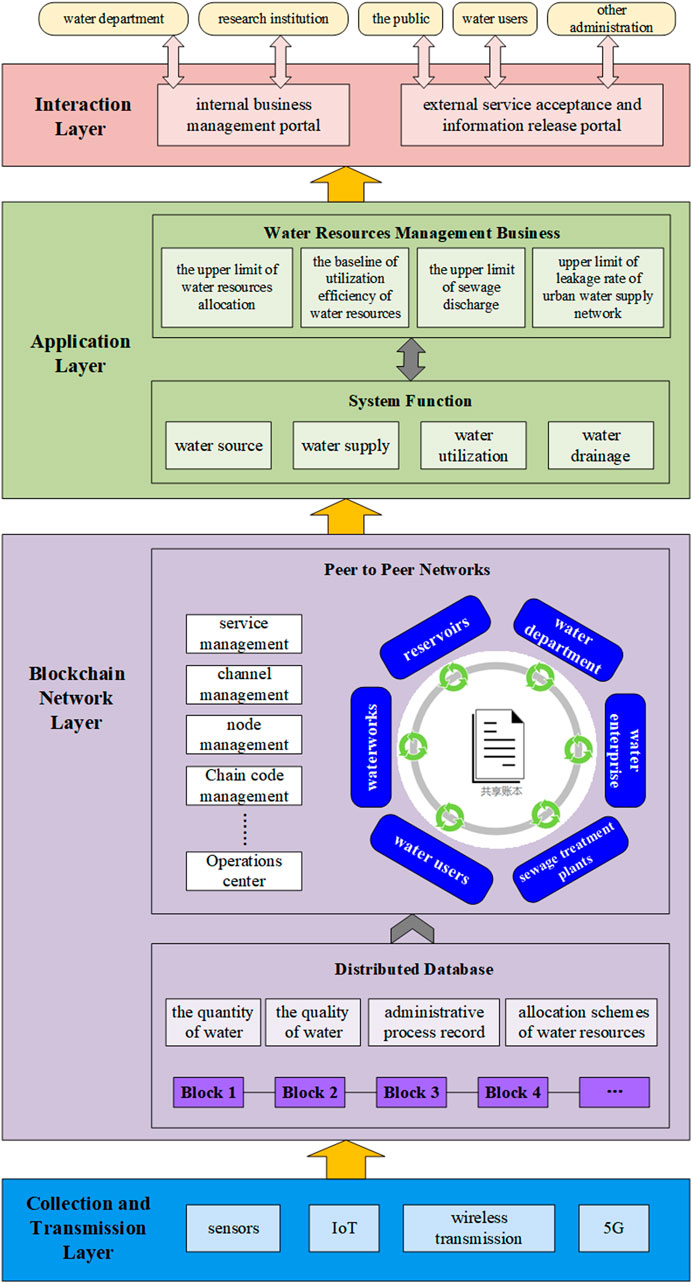The Integration of IoT and Blockchain for Enhanced Security

- Understanding IoT and Blockchain Technology
- The Benefits of Integrating IoT and Blockchain
- Enhancing Security with IoT and Blockchain
- Challenges and Solutions in Integrating IoT and Blockchain
- Real-world Applications of IoT and Blockchain Integration
- Future Trends in IoT and Blockchain Security
Understanding IoT and Blockchain Technology
The integration of **IoT** and **blockchain** technology is revolutionizing the way we approach **security** in the digital age. **IoT**, or the Internet of Things, refers to the network of interconnected devices that can communicate and share data with each other. **Blockchain** is a decentralized and secure digital ledger that records transactions across a network of computers.
By combining **IoT** and **blockchain**, organizations can enhance the **security** of their systems and data. **Blockchain** technology provides a tamper-proof and transparent record of transactions, making it ideal for securing **IoT** devices and the data they generate. This ensures that the data collected by **IoT** devices is trustworthy and secure.
One of the key benefits of integrating **IoT** and **blockchain** is the ability to create a more secure and efficient **network** of connected devices. **Blockchain** technology can help verify the identity of **IoT** devices and ensure that only authorized devices can communicate with each other. This helps prevent unauthorized access and **cyberattacks** on **IoT** systems.
Furthermore, **blockchain** technology can also help improve the **privacy** of **IoT** data. By encrypting data and storing it on a **blockchain** network, organizations can ensure that sensitive information is protected from **cyber threats** and unauthorized access. This can help build trust with customers and partners who rely on **IoT** devices for their operations.
In conclusion, the integration of **IoT** and **blockchain** technology offers a powerful solution for enhancing **security** in the digital age. By leveraging the strengths of both technologies, organizations can create a more secure and efficient **network** of connected devices, protect **privacy**, and build trust with stakeholders. As **IoT** continues to grow and evolve, **blockchain** technology will play an increasingly important role in ensuring the **security** and integrity of **IoT** systems.
The Benefits of Integrating IoT and Blockchain
The integration of IoT and blockchain offers a wide range of benefits that can significantly enhance security in various industries. By combining the capabilities of IoT devices with the security features of blockchain technology, organizations can create a more robust and secure network infrastructure.
One of the key benefits of integrating IoT and blockchain is the enhanced data security it provides. Blockchain technology ensures that data stored on the network is tamper-proof and secure from unauthorized access. This is especially important in industries where sensitive information is being transmitted and stored.
Another advantage of combining IoT and blockchain is the increased transparency it offers. Blockchain technology allows for the creation of a decentralized and transparent network where all transactions are recorded and can be easily verified. This helps to prevent fraud and ensures that data integrity is maintained.
Furthermore, the integration of IoT and blockchain can improve the efficiency of processes within an organization. By automating tasks and streamlining operations, organizations can reduce costs and improve overall productivity. This is particularly beneficial in industries where real-time data analysis is crucial.
In conclusion, the integration of IoT and blockchain technology can provide organizations with a powerful tool to enhance security, improve transparency, and increase efficiency. By leveraging the strengths of both technologies, organizations can create a more secure and reliable network infrastructure that is better equipped to handle the challenges of the digital age.
Enhancing Security with IoT and Blockchain
Enhancing security with the integration of IoT and blockchain technology is crucial in today’s digital landscape. By combining the capabilities of IoT devices with the security features of blockchain, organizations can create a robust and tamper-proof system to protect their data and assets.
One of the key benefits of using blockchain in conjunction with IoT is the ability to create a decentralized network that is resistant to cyber attacks and data breaches. The distributed nature of blockchain ensures that data is stored securely across multiple nodes, making it nearly impossible for hackers to compromise the system.
Furthermore, the use of smart contracts in blockchain technology allows for the automation of security protocols, reducing the risk of human error and ensuring that security measures are consistently enforced. This can help organizations streamline their security processes and respond more effectively to potential threats.
Overall, the integration of IoT and blockchain offers a powerful solution for enhancing security in various industries, including healthcare, finance, and supply chain management. By leveraging the strengths of both technologies, organizations can build a more resilient security infrastructure that protects against evolving cyber threats.
Challenges and Solutions in Integrating IoT and Blockchain
Integrating IoT and blockchain presents several challenges that need to be addressed for successful implementation. One of the main challenges is the scalability of both technologies. As the number of IoT devices increases, the blockchain network must be able to handle the growing volume of transactions. This requires efficient consensus mechanisms and network protocols to ensure smooth operation.
Another challenge is the interoperability between IoT devices and blockchain platforms. Different devices may use varying communication protocols and data formats, making it difficult to standardize interactions. Solutions such as middleware layers and standardization efforts can help bridge this gap and enable seamless integration.
Security is a critical concern when integrating IoT and blockchain. IoT devices are vulnerable to cyber attacks, and blockchain networks must ensure the integrity and confidentiality of data. Implementing robust encryption, authentication mechanisms, and access control policies can help mitigate security risks and protect sensitive information.
Furthermore, the complexity of managing decentralized networks and distributed ledgers can pose challenges in terms of governance and compliance. Establishing clear governance models, regulatory frameworks, and audit mechanisms is essential to ensure transparency, accountability, and regulatory compliance in IoT and blockchain integration projects.
Real-world Applications of IoT and Blockchain Integration
The integration of IoT and blockchain technology has numerous real-world applications that can significantly enhance security across various industries. By combining the capabilities of IoT devices to collect and transmit data with the secure and immutable nature of blockchain technology, organizations can create a more robust and trustworthy system for managing and securing sensitive information.
One key application of this integration is in supply chain management, where IoT sensors can track the movement and condition of goods in real-time, while blockchain technology ensures that this data remains tamper-proof and transparent. This can help prevent fraud, theft, and counterfeiting along the supply chain, ultimately leading to cost savings and increased trust among stakeholders.
Another important application is in the field of healthcare, where IoT devices can monitor patients’ vital signs and transmit this data to healthcare providers securely through blockchain technology. This not only improves the quality of care by enabling remote monitoring and early intervention but also protects patient data from unauthorized access or tampering.
Furthermore, the integration of IoT and blockchain can revolutionize the energy sector by enabling the creation of smart grids that optimize energy distribution and consumption. IoT devices can collect data on energy usage, while blockchain technology can ensure the integrity and security of transactions between energy producers and consumers, leading to more efficient and sustainable energy management.
In conclusion, the integration of IoT and blockchain technology offers a wide range of applications that can enhance security and efficiency in various industries. By leveraging the strengths of both technologies, organizations can create a more resilient and transparent system that protects data, prevents fraud, and improves overall operations.
Future Trends in IoT and Blockchain Security
As technology continues to advance, the future trends in IoT and blockchain security are becoming increasingly important. The integration of these two technologies offers enhanced security measures for various industries. One of the key trends is the use of blockchain to secure IoT devices and data. By utilizing blockchain technology, data stored on IoT devices can be encrypted and securely transmitted, reducing the risk of unauthorized access.
Another trend in IoT and blockchain security is the implementation of smart contracts. Smart contracts are self-executing contracts with the terms of the agreement directly written into code. This technology can help automate processes and ensure that transactions are secure and transparent. By using smart contracts, organizations can streamline operations and reduce the risk of fraud.
Furthermore, the use of decentralized networks is a growing trend in IoT and blockchain security. Decentralized networks distribute data across multiple nodes, making it more difficult for hackers to compromise the system. This distributed approach enhances security and ensures that data remains secure and tamper-proof.
In conclusion, the integration of IoT and blockchain technologies offers a promising future for enhanced security measures. By leveraging blockchain for encryption, smart contracts for automation, and decentralized networks for data distribution, organizations can strengthen their security posture and protect against cyber threats.





